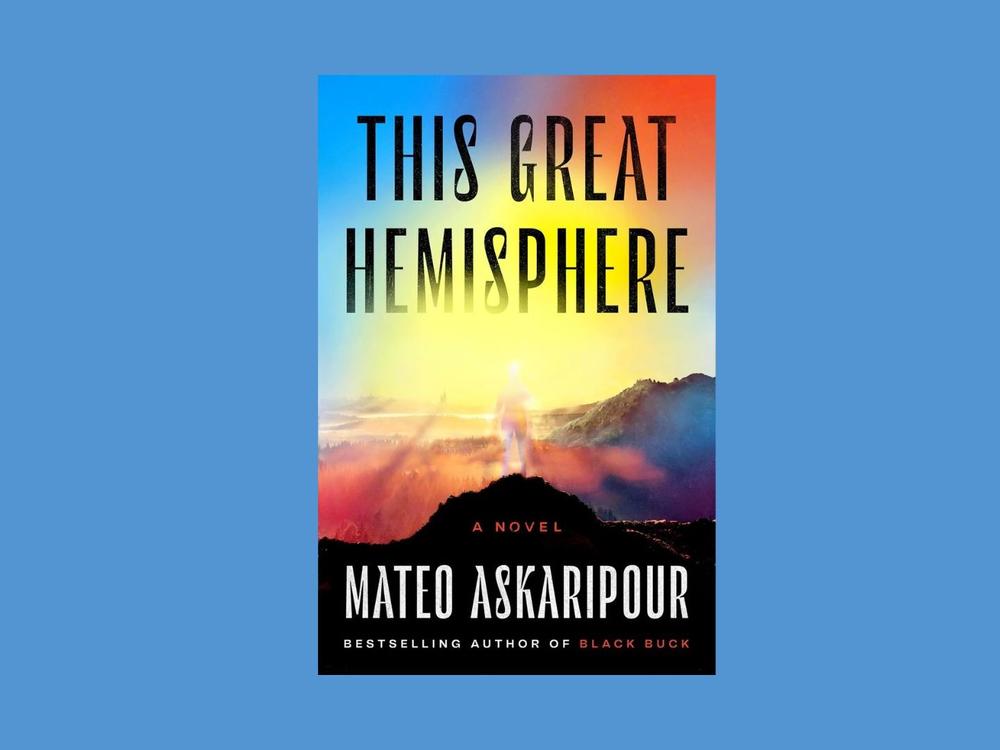Section Branding
Header Content
'This Great Hemisphere' tackles racism, classism, and political power struggles
Primary Content
Mateo Askaripour's sophomore novel This Great Hemisphere is a sprawling speculative-fiction narrative that tackles racism, classism, and the perpetual power struggle of politics. But it also delivers a heartwarming story about a young woman learning to navigate the world.
Sweetmint is a young invisible woman living somewhat separated from the rest of her community in the relative calm of Forest Twenty-Six. She has done everything well in her life, and now finds herself about to interview for an apprenticeship with Croger Tenmase, known as "The Chief Architect" — and the Northwestern Hemisphere's savior and leading inventor. When she gets the apprenticeship, her life changes.
Unfortunately the change is short-lived, as Sweetmint's beloved older brother, who mysteriously vanished a few years ago, is rumored to not only be alive but he's also suspected of killing the Chief Executive of the Northwestern Hemisphere. With authorities looking for her brother, Sweetmint must use her intellect to find him first. Meanwhile, the hemisphere's elections are right around the corner, and those involved are willing to go to any lengths to acquire the power they crave.
This Great Hemisphere is a complex, expansive novel packed with too many elements to discuss here. Askaripour possesses a powerful imagination, and it is in full display. Besides the stark differences between the "Invisibles" and the DPs -- the "Dominant Population" -- the author delivers strange worlds and technology, bizarre rituals, and lush descriptions of places, things, and events. More importantly, Askaripour uses the Invisibles and DPs to explore otherness and racism in interesting ways. That the narrative will be about these topics is clear early on, when the prologue that sets up the story -- which takes place in New York City in 2028 before the story jumps to the year 2529 – with a white woman harassing a Black homeless woman who is pregnant "to save a Poor Black Child™ from its Neglectful Black Mother™." For the rest of the narrative, those who are invisible are second-class citizens -- they don't have the same jobs and opportunities and are called things like "vizzers" by the DPs. Besides the social critique on the surface, Askaripour shows that hatred and misunderstanding, along with the slurs that usually accompany those things, are so deeply engrained into society that even getting close to extinction doesn't make people good to each other.
While This Great Hemisphere is rich, multilayered, and contains some dazzling passages, the narrative is not without flaws. Perhaps the biggest one is the way the author dedicates pages upon pages to things like painting rituals and politics but never really goes deeper into things like languages, the big changes the world has gone through, or how the invisible people came to be. This novel is, in part, an interesting blend of speculative elements that go from science fiction to fantasy. This means that the worldbuilding has to be there, and when it comes to that, Askaripour certainly delivers. However, the story is also a twisty political thriller with elements of crime and mystery -- and those genres demand a faster, tighter pace, which the novel never delivers.
The sophomore curse is not an issue for Askaripour. Sweetmint is a memorable character, the world the author created for this novel is impressive, and the social critique is doled out in a way that it accomplishes what it sets out to do without ever becoming preachy or overpowering the rest of the elements that make up the narrative. Also, some of the things the author brings to the page are unique and show he paid a lot of attention not only to detail but also to the inner landscape of his characters. For example, the rumoya, "the life force flowing through all Invisibles, unique to each of them, influencing thought, feeling, and action" is so important that it emerges as another character in the novel, a ubiquitous presence that sometimes acts like a soul and sometimes like a sixth sense or an inner voice. Small details like that, which are sprinkled throughout the story, show Askaripour is a voice to watch.
This Great Hemisphere is large in many ways, which is good, but it's clear that some of the important details that held this world together were lost somewhere between Askaripour's gifted imagination and the page. The novel is sometimes touching, sometimes wildly engaging, and sometimes slightly disjointed and sluggish, which makes for an interesting reading experience in which some passages grab you and won't let go and others make you want to quickly power through just to get to whatever is next. Despite these flaws, the strength of the novel and the clarity of its messages make it a recommendable read, especially for those who enjoy complex worldbuilding.
Gabino Iglesias is an author, book reviewer and professor living in Austin, Texas. Find him on X, formerly Twitter, at @Gabino_Iglesias.

